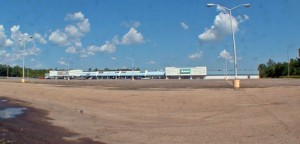By Dom Nozzi
An important point is often made that for effective, durable implementation, land development codes (the rules that local developers need to abide by) need to be “bullet-proofed” to survive subversion (being “watered down”) from staff, elected officials, or citizen review boards.
While I agree with the need for bullet-proofing (and always strive to achieve it in the codes I write), my experience over the years has been that even the best land development regulations we adopted in the city I worked for in Florida were frequently unable to survive significant suburbanizing pressure from staff, officials and board members (which ends up giving projects and urbanism a black eye).
By “suburbanizing,” I am referring to the century-long American tradition of revising land development regulations to make it easier, more convenient, and less costly to drive a car. Densities, Floor Area Ratios, and building heights are reduced.  Requirements for the amount of car parking are increased. Setbacks are enlarged. Streets are widened. Intersection turning radii are increased. Sidewalk requirements are weakened. Mixing housing with offices or retail is minimized. Car parking is allowed in front of buildings.
Requirements for the amount of car parking are increased. Setbacks are enlarged. Streets are widened. Intersection turning radii are increased. Sidewalk requirements are weakened. Mixing housing with offices or retail is minimized. Car parking is allowed in front of buildings.
Besides the graphics-supported, relatively objective urban codes I prepared, my city had urban land development regulation “overlays” prepared over the past 10-15 years by Dover-Kohl and DPZ (“overlays” are regulations that are applied to unique locations which “overlay” the underlying development regulations that apply elsewhere in the city). In my opinion, many of those overlay codes were better than average.
But because most all of the planners and engineers working for the Florida city I was employed at (as well as elected officials and board members) were rather “suburban” in their preferences, the City often ended up with development site plans that were degraded by appalling, transect-violating suburban design strategies in walkable, town center overlay areas (places where compact, walkable design is appropriate and dispersed, drivable design is inappropriate).
These modifications to the design requirements were clearly are in conflict with the compact, walkable standards within the overlay. For example, excessive car parking and excessive building setbacks were regularly imposed on the proposed development, which were shockingly in conflict with the walkable intent of the overlay regulations.
Note that sometimes, it is not so much a clear (objective) violation of a development standard so much as a “creative (subjective) interpretation” of the standard.
It is true that a potentially useful tool is to write a code that does not allow variances or exceptions for the crucial walkability standards. But there end up being so many conditions that allow relief by variance (such as oak trees, which I found I was the only one in my community willing to sometimes sacrifice for better walkability), that it was very difficult to protect walkability standards from variance in the code. The suburbanite insurgents nearly always found many ways, in other words, to suburbanize a proposed development as a way to ease car travel. Even in a location proposed for walkability.
The question, therefore, is this: Is it even possible to “bullet- proof” walkability codes from suburban pressure? Or is it perhaps necessary that a community establish TWO SETS of staff reviewers and citizen boards? One set would be  walkability staff reviewers and a walkability citizen board which would only review site plans in town center locations, and another set which would be suburban, drivable staff reviewers and a suburban citizen board which would only review site plans in the suburban transect zones.
walkability staff reviewers and a walkability citizen board which would only review site plans in town center locations, and another set which would be suburban, drivable staff reviewers and a suburban citizen board which would only review site plans in the suburban transect zones.
Note that I find it enormously undesirable to create two sets of these groups, due to costly administrative and bureaucratic nightmares a dual system would amplify. However, I don’t know if there is another option if we seek to effectively protect compact, walkable development regulations from being watered down in the name of easier car travel (and, therefore, worse conditions for walking).


